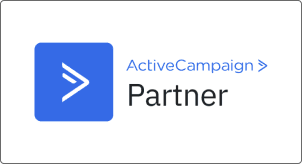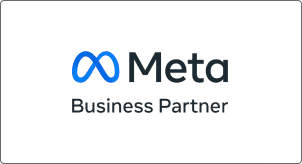Keen to grow your business, increase your sales and skyrocket your profits?
The bad news is that so does everybody else.
The good news is that YOU’RE the one who’s going to do something about it.
One way to get more profits is to close your eyes, cross your toes and hope for the best. This method can be super effective, but only if you’ve got a good dose of luck on your side.
The best way to guarantee a huge amount of conversions is to tackle your digital marketing efforts with strategy.
Enter: the conversion funnel.
So, what is a conversion funnel?
A conversion funnel just means the stages a customer goes through in the buyer journey – starting from awareness of your brand, all the way through to a conversion/purchase.
The reason it’s funnel-shaped is because, as customers move through the funnel, they drop out at different stages. Ten people could be aware of your brand, so they’re all in the first stage [the wider part of the funnel]. Eight people could be interested, and only four people could take action and buy from you [they’re down at the narrower part].
So, what are the stages in a conversion funnel?
Also known as the AIDA model, these stages of a tradition conversion funnel are:
- Awareness: Someone discovers your brand and becomes a lead.
- Interest: You build their interest in your product through effective marketing.
- Desire: You create enough desire for your product or service that your potential customer goes from knowing about you, to wanting what you have to offer.
- Action: You encourage them to take the desired action and turn them into a customer.
How do you build a conversion funnel that works?
Now that you know what a conversion funnel actually is, it’s time to start building one that works. Here’s how:
Figure out who your perfect customer is
The most effective way to build a conversion funnel for your business is to know your perfect customer. Who are they? Where do they live geographically? What do they value? Delve into some market research and start gathering information about your audience, industry and competitors.
When you know these things, it’s a whole lot easier to actually get customers into your funnel, because you’ll know what makes them tick.
Goal-setting
For each stage of your funnel, decide on your objective. For example, you might want to drive traffic in the first stage of the funnel in order to increase awareness of your brand. At the end of the funnel, you might want to increase conversions [in fact, you DEFINITELY will].
Knowing what your goals means that you can apply a slightly different strategy to every part of your funnel, making it sooooo much more effective at moving customers through it.
Implementation
Once you know what you want from each stage of your funnel, now you can figure out how to get it. This is alllll about marketing your product to your customers – but it needs to be strategic.
Remember, the goal of each stage in the funnel will be different, and your implementation should be too. Here are some ideas:
- Use PPC advertising to drive traffic to your website [awareness].
- Optimise your SEO so that more people can find you online [awareness].
- Start posting user-generated content on your Instagram feed [desire].
- Improve the copy on your website [interest].
- Create compelling blog posts to showcase your product or service [interest, desire and awareness].
Keep your customers in your funnel
Lots of businesses are great at getting customers into the top of their funnel. They have lots of social media followers but very few conversions. That’s because they don’t keep people moving along. Other businesses generate interest, but then the customer fails to take action and disappears forever.
So, how can you keep people in your funnel and, better yet, ensure they’re always moving in the right direction? Here are some ideas used by the most successful companies out there:
- Loyalty programs: yep, nothing fancy, just points or rewards for engaging with your product or service as a repeat customer.
- Next-selling: this means following up with a customer after they’ve made a purchase. This’ll make them feel valued and encourage repeat custom.
- Product updates: you’ve got a customer on your email list, now send them products or services you think they’d love.
Keeping customers who’re already in your funnel isn’t easy, but it’s a lot cheaper than trying to acquire new ones. In fact, businesses have a 60 to 70% chance of selling to an existing customer while the probability of selling to a new prospect is only 5% to 20%!
Need more ideas?
These are just a few ideas you can use to keep your customers interested. If you’re keen to grow your business using an effective sales funnel, get in touch with 3 Phase Marketing today. We’re a lovely bunch of humans who just LOVE helping people grow their businesses. We’re pretty good at it, too 😎







